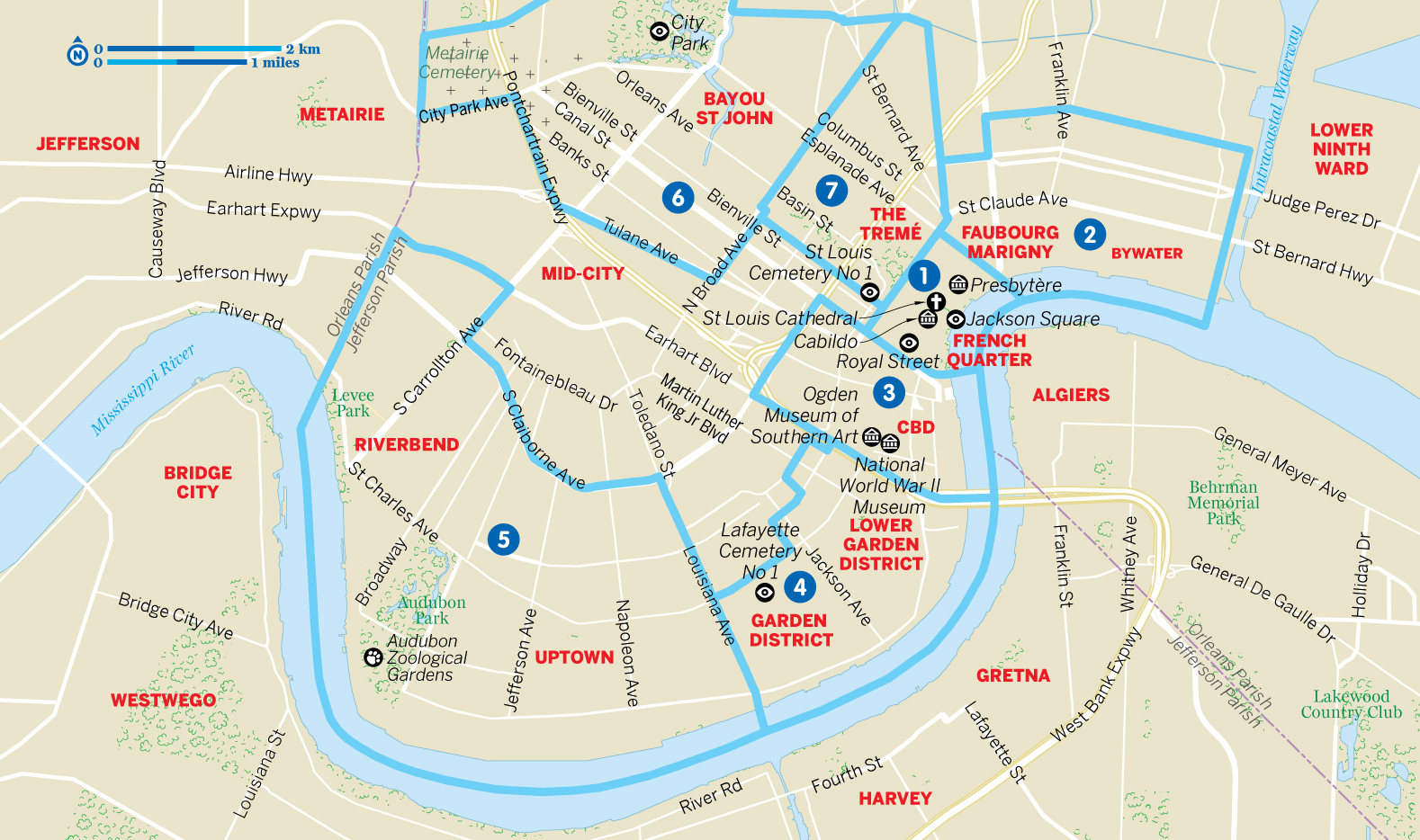Neighborhoods at a Glance

1French Quarter
Also known as Vieux Carré (‘voo car-ray’; Old Quarter) and ‘the Quarter’, the French Quarter is the original city as planned by the French in the 1800s. Here lies the infamous Bourbon St, but of more interest is an elegantly aged grid of shopfronts, iron lamps and courtyard gardens. Most visitors begin exploring the city here and some never leave the area. That’s not to say the Quarter isn’t lovely, but it’s a bit like a theme park: heavy on tourist traffic and light on locals.
2Faubourg Marigny & Bywater
Just downriver from the French Quarter, the Marigny and Bywater are both Creole faubourgs (literally ‘suburbs,’ although ‘neighborhoods’ is more accurate in spirit). They once stood at the edge of gentrification, and attracted a glut of artists and creative types, as such areas are wont to do. While gentrification has firmly set in, these remain fascinating, beautiful neighborhoods – the homes are bright, painted like so many rows of pastel fruit, and plenty of oddballs still call this home.
3CBD & Warehouse District
The Central Business District (CBD) and Warehouse District have long been a membrane between downriver Creole faubourgs like the French Quarter and the large leafy lots of the Garden District and Uptown. This is an area that has always been in search of an identity, in a city with a distinct sense of place. Between offices and forgettable municipal buildings lie some of the city’s best museums, as well as posh restaurants, art galleries and converted condos.
4Garden, Lower Garden & Central City
As one proceeds south along the curve of the Mississippi River, the streets become tree-lined and the houses considerably grander. When you tire of craning back to take in multiwing mansions, you’re in the Garden and Lower Garden Districts, the beginning of New Orleans’ ‘American Sector’ (so named because it was settled after the Louisiana Purchase). Nearby Central City’s main thoroughfare, Oretha Castle Haley Blvd, is undergoing a fitful but steady renaissance following years of neglect.
5Uptown & Riverbend
In Uptown, the views of mansion after mansion on St Charles Ave are worth checking out even if you’re not an architecture fan.
Magazine St is one of the coolest strips of restaurants and shopping outlets in town. Eventually the ‘U’ curves north again along the river’s bend into Riverbend, popular with the university crowd.
6Mid-City, Bayou St John & City Park
Back in the day, this was the back of beyond: the bottom of the depression that is the New Orleans geographic bowl, an area of swampy lowlands and hidden gambler dens. Today? This lovely district includes long lanes of shotgun houses, bike lanes, the gorgeous green spaces of City Park, the elegant mansions of Esplanade Ave and the slow, lovely laze of Bayou St John.
7Tremé-Lafitte
Few neighborhoods hold their finger on the city’s cultural pulse like the Tremé. This handful of square blocks has had a disproportionate impact on world music. This is where jazz was invented, by free people of color and the descendants of slaves, who mixed African rhythms with European syncopation and homegrown improvisation. When you consider jazz led to rock led to hip hop led to modern pop, just remember, the roots of that musical tree find their soil here.